I know we're bound to have some photography buffs around here. I like taking pictures of my beer, but I'd like it more if they looked better. I've tried a few things like different light but I really don't know what I'm doing. I'm not working with a fancy camera here, just a pocket fujifilm 4.1 megpixel. Could anyone give a simple explanation or tutorial for taking a good picture of a pint that showcases the clarity, color, foam, etc?
You are using an out of date browser. It may not display this or other websites correctly.
You should upgrade or use an alternative browser.
You should upgrade or use an alternative browser.
Photographing Beer?
- Thread starter Coastarine
- Start date

Help Support Homebrew Talk - Beer, Wine, Mead, & Cider Brewing Discussion Forum:
This site may earn a commission from merchant affiliate
links, including eBay, Amazon, and others.
Hokie
Well-Known Member
I can offer some basic tips without getting too complicated (that would really be getting into SLR territory)...
1. Don't use the flash. It would create ton of glare on the glass and all you'd see is the reflection. Find the feature on your camera that actively turns it off.
1a. Use lighting available to you..whether it be sunlight or artificial, and add more if necessary...from various angles to eliminate as much shadow as you can (unless you want that effect). Your camera will probably take care of the white balance and stuff.
2. Fill most of the frame with your subject (and if you're going for an artsy look, remember the rule of thirds). Get as close as you feel you need to (within the focal range) or zoom in (without using digital zoom). Try to eliminate any background clutter. Your camera will probably try to put everything into focus, so this is an important point. You may even want to stage a scene or use a DIY mini "photo studio" with your own backdrop. If you look at a lot of beer stock photography, you'll see what I mean by filling the frame.
3. Take A LOT of pics! I can't emphasize this enough. Take them from every angle with with as many different lighting configurations as you can. You will most likely find a few you'll like. With flash memory prices as low as they are today, there's no excuse not to. And use the highest resolution you can. You may want to crop out a certain portion of the pic and you don't want to end up with a really low resolution version of the perfect result.
I hope that makes sense and helps at least a little. I know it a lot of it seems pretty elementary, but with point and shoot cameras these days, there's not much else you can control.
Exposure, aperture, and lens options will have to wait for another time I guess. Haha.
Good luck!
1. Don't use the flash. It would create ton of glare on the glass and all you'd see is the reflection. Find the feature on your camera that actively turns it off.
1a. Use lighting available to you..whether it be sunlight or artificial, and add more if necessary...from various angles to eliminate as much shadow as you can (unless you want that effect). Your camera will probably take care of the white balance and stuff.
2. Fill most of the frame with your subject (and if you're going for an artsy look, remember the rule of thirds). Get as close as you feel you need to (within the focal range) or zoom in (without using digital zoom). Try to eliminate any background clutter. Your camera will probably try to put everything into focus, so this is an important point. You may even want to stage a scene or use a DIY mini "photo studio" with your own backdrop. If you look at a lot of beer stock photography, you'll see what I mean by filling the frame.
3. Take A LOT of pics! I can't emphasize this enough. Take them from every angle with with as many different lighting configurations as you can. You will most likely find a few you'll like. With flash memory prices as low as they are today, there's no excuse not to. And use the highest resolution you can. You may want to crop out a certain portion of the pic and you don't want to end up with a really low resolution version of the perfect result.
I hope that makes sense and helps at least a little. I know it a lot of it seems pretty elementary, but with point and shoot cameras these days, there's not much else you can control.
Exposure, aperture, and lens options will have to wait for another time I guess. Haha.
Good luck!
WBC
Well-Known Member
Back lighting shows off beer. You see the clarity and color better. What you see behind the glass should be slightly out of the depth of field so it shows off the beer instead of the background. Simple cameras have limited abilities. Look at others pictures to see what they did that you like and try to mimic that type of picture. There is a lot online about photography technique.
+1 on the no flash, you might like to try this... Set up a light source that shines up through the bottom of a clear pint glass, just through the bottom. Try it with a flashlight and I think you will get the idea, I would use a black background for less distraction. Good luck.
Grinder12000
Well-Known Member
+1 Back lighting shows off beer - as you can see - snow helps.


i havent photographed beer, but i have done food, actually i think i had a beer in one of the shots, off to look. put your beer on a table with a well lit window across the room in the background, set your camera to portrait mode, focus on the glass, shoot. use a tripod if you have one to help out if your camera wants to run a longer shutter.
its also very easy to set up a home studio with minimal stuff. these shots where taken on a table with a white sheet as a backdrop and 3 of those cheap silver work/heat lights you can get at lowes/home depot. for a studio setup that cost less than $50 you wouldn't believe how much this shoot made me and i didnt even think it was that good!



i think the beer was a saranac ipa. the photos where taken for an Asian restaurant that a local architect was building in the Boston airport. i dont think they bought any of the beer photos, i cant remember now. maybe someone who goes through the Boston airport a lot could let me know!
its also very easy to set up a home studio with minimal stuff. these shots where taken on a table with a white sheet as a backdrop and 3 of those cheap silver work/heat lights you can get at lowes/home depot. for a studio setup that cost less than $50 you wouldn't believe how much this shoot made me and i didnt even think it was that good!



i think the beer was a saranac ipa. the photos where taken for an Asian restaurant that a local architect was building in the Boston airport. i dont think they bought any of the beer photos, i cant remember now. maybe someone who goes through the Boston airport a lot could let me know!
I like doing it outside if possible because sunlight is hard to replicate indoors. I also like have an almost infinite distance behind so that the background blurs (as long as you use an fstop around 2.8.
Indoors a lightbox would be ideal.
Indoors a lightbox would be ideal.
I like doing it outside if possible because sunlight is hard to replicate indoors. I also like have an almost infinite distance behind so that the background blurs (as long as you use an fstop around 2.8.
Indoors a lightbox would be ideal.
a large ap is essential to getting a shallow depth of field. depending on the lens i had when i did those shots i either used f2.8 or f4.5. that shoot i couldnt do out side do to customer requirements, otherwise natural light is the best.
its real easy to make a light box, all you need is some tissue paper, a couple lights, and a cardboard box. here is one i built a couple years ago.

resulting shots


took me about an hour to put together, it would work great for beer shots. i may have to go dig it back out and play around with it this weekend!
You'll love having a digital! Even a decent pocket camera can take great shots, and having a digital camera means that you can take a LOT of pictures. You will want to do this.
Most pocket digitals today have enough manual features to overcome most obstacles, but if not, you might be limited in how you set up a shot. You can get various effects from different lighting, depending on what you are trying to accomplish. Read up on the different aspects of lighting etc. Even without some of the optional manual settings, a modern pocket digital will take great shots, even if the optics are not great.
Plus, a modern image software can help to adjust color, brightness/contrast, etc.
You will want to use a tripod, or other stabilizing device, even if your camera comes with a so-called stabilization mode. Pockets cameras have a poor stabilization process, and anyway you won't need it with a good tripod device.
Good luck! There aren't enough pictures of beer in the world!
Most pocket digitals today have enough manual features to overcome most obstacles, but if not, you might be limited in how you set up a shot. You can get various effects from different lighting, depending on what you are trying to accomplish. Read up on the different aspects of lighting etc. Even without some of the optional manual settings, a modern pocket digital will take great shots, even if the optics are not great.
Plus, a modern image software can help to adjust color, brightness/contrast, etc.
You will want to use a tripod, or other stabilizing device, even if your camera comes with a so-called stabilization mode. Pockets cameras have a poor stabilization process, and anyway you won't need it with a good tripod device.
Good luck! There aren't enough pictures of beer in the world!
davesrose
Well-Known Member
its real easy to make a light box, all you need is some tissue paper, a couple lights, and a cardboard box. here is one i built a couple years ago.
Agreed....just find an old carboard box and cut it up....make windows on both sides, and tape tissue paper on the sides and then another long strip on the top part of the box. Really like that setup since you won't get any harsh shadows or background in your "product placement" shot. And with digital photography, you can further save money and get cheap flood lights from the hardware store. The light gets to be a pretty warm temp, so you have to adjust your white balance (most cameras will at least let you switch to a tungsten mode if you can't calibrate WB further).
Agreed....just find an old carboard box and cut it up....make windows on both sides, and tape tissue paper on the sides and then another long strip on the top part of the box. Really like that setup since you won't get any harsh shadows or background in your "product placement" shot. And with digital photography, you can further save money and get cheap flood lights from the hardware store. The light gets to be a pretty warm temp, so you have to adjust your white balance (most cameras will at least let you switch to a tungsten mode if you can't calibrate WB further).
i put those 13W daylight twist bulbs in my lights for the car shot. had to tweak the white balance a little but they actually work really well and dont get too warm!
Some great posts here. I totally agree with:
Skip the flash
Go for composition (how the subject fills/is arranged in the frame)
Backlighting
Get a tripod or whatever to hold the camera steady - after the camera itself, this could very well be a photographer's most valuable tool.
Avoid going too diffuse on your lighting. Some directional lighting can make things pop, and "rim lighting" helps set the subject apart from the backdrop.
Here's a picture I took. Could be better, but for a quickie shot with available lighting and a crummy old 1.3 MP camera, I think it came out ok.
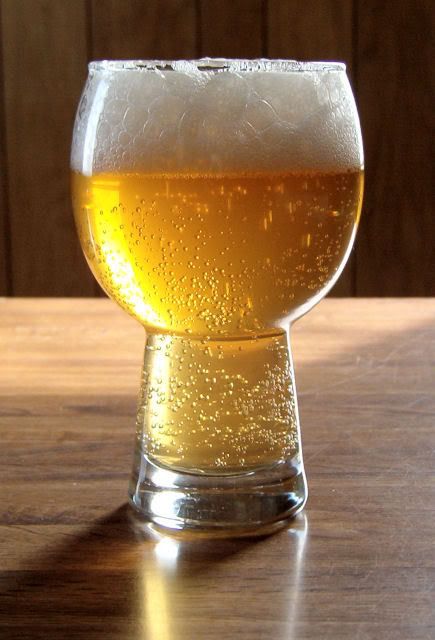
Skip the flash
Go for composition (how the subject fills/is arranged in the frame)
Backlighting
Get a tripod or whatever to hold the camera steady - after the camera itself, this could very well be a photographer's most valuable tool.
Avoid going too diffuse on your lighting. Some directional lighting can make things pop, and "rim lighting" helps set the subject apart from the backdrop.
Here's a picture I took. Could be better, but for a quickie shot with available lighting and a crummy old 1.3 MP camera, I think it came out ok.

chainsawbrewing
Well-Known Member
i would go to manual mode if you can on your camera. get as low of a number on your apeture (fstop) as you can, and then compensate the shutter speed accordingly. you'll want a tripod, and your non slr might not go up much more than 3.0 or so. the lower the number, the shallower your d.o.f., the better your bokeh, the more prominent the beer will look in frame. however, with only indoor lighting, like i said you'll have to for sure use a tripod, because with a lower fstop number, you'll need a much longer shutter speed to compensate for letting enough light in to expose properly.
check out this link, it helps explain shutter speed versus apeture, versus iso, etc.
Photography Exposure Basics: Shutter Speed, Aperture, ISO
check out this link, it helps explain shutter speed versus apeture, versus iso, etc.
Photography Exposure Basics: Shutter Speed, Aperture, ISO
Hegh
Well-Known Member
url=http://www.betterphoto.com/article.asp?id=135]Photography Exposure Basics: Shutter Speed, Aperture, ISO[/url]
Wow, I never really understood what the effects of aperture and shutter speed were, but that was very helpful. Still not exactly sure what ISO is, but at least I've got a bit of an idea now...
As far as I can tell, ISO seems to be how much the camera tries to do with what it's got. So with a high ISO, the camera is trying to do more with less information, leading to graininess; with a low ISO, the camera is taking in more information, allowing it to fill in the spots that would get left out with the high value. What I don't understand is how it can do this irrespective of shutter speed.
Or is it irrespective? Will the shot be darker with a low ISO value, unless you slow down your shutter?
Sorry, I know this is a brewing forum and not a photography forum...

KingBrianI
Well-Known Member
i would go to manual mode if you can on your camera. get as low of a number on your apeture (fstop) as you can, and then compensate the shutter speed accordingly. you'll want a tripod, and your non slr might not go up much more than 3.0 or so. the lower the number, the shallower your d.o.f., the better your bokeh, the more prominent the beer will look in frame. however, with only indoor lighting, like i said you'll have to for sure use a tripod, because with a lower fstop number, you'll need a much longer shutter speed to compensate for letting enough light in to expose properly.
check out this link, it helps explain shutter speed versus apeture, versus iso, etc.
Photography Exposure Basics: Shutter Speed, Aperture, ISO
you're a bit backwards here. a lower f-number means a wider aperture, and thus, more light getting in. Therefore, a faster shutter speed could be used the lower the f-number.
KingBrianI
Well-Known Member
Wow, I never really understood what the effects of aperture and shutter speed were, but that was very helpful. Still not exactly sure what ISO is, but at least I've got a bit of an idea now...
As far as I can tell, ISO seems to be how much the camera tries to do with what it's got. So with a high ISO, the camera is trying to do more with less information, leading to graininess; with a low ISO, the camera is taking in more information, allowing it to fill in the spots that would get left out with the high value. What I don't understand is how it can do this irrespective of shutter speed.
Or is it irrespective? Will the shot be darker with a low ISO value, unless you slow down your shutter?
Sorry, I know this is a brewing forum and not a photography forum...
you can think of ISO as the sensitivity of the sensor. at lower ISOs, the sensor is less sensitive, and at higher ISO, more sensitive. The sensitivity comes at a cost though. Turning up the ISO is like turning up an amplifier, so any noise gets amplified as well.
Shutter speed, ISO, and f-number all contribute to the light gathered for a shot. Each can also be manipulated seperately. Therefore, if say the ISO were to remain the same, you would have to open the aperture (lower f-number) if you wanted to use a faster shutter speed (say to freeze action) and gather as much light.
chainsawbrewing
Well-Known Member
you're a bit backwards here. a lower f-number means a wider aperture, and thus, more light getting in. Therefore, a faster shutter speed could be used the lower the f-number.
yeah i know. i was trying to save the confusion, but probably made it worse, lol.
that website i posted helped me back in the day, with the simple illustration of the well, bucket, and the water.
ISO settings on a digital camera is basically digitals way of the old film speeds of the film days.
if you have less available light, use a higher iso, but the trade is if you have a cheaper/older digi cam, you will get noise in higher iso numbers, although some of the new cameras can deal with noise very well. i shoot usually around 200iso, but i have done some stuff as high as 1600 with zero noise.
the beauty of digital, is just snap away untill you get it right. experimenting is fun!
here's another decent page explaining iso better.
http://www.photoxels.com/tutorial_iso.html
LateApex
Member
I'm just getting into homebrewing, but my main hobby is photography.
One more vote for a tripod, and no flash. Available light will sometimes make for off colors indoors, since digital is not very good with white balance and incandescent lighting. Even my fancy SLRs will miss the WB on incandescent bulbs. If you have a manual white balance setting, try it.
Another tip for keeping blur/camera shake out of the photo is to use the self-timer while on the tripod. Unless you have a big beefy tripod, you can still shake it when you press the shutter.
One more vote for a tripod, and no flash. Available light will sometimes make for off colors indoors, since digital is not very good with white balance and incandescent lighting. Even my fancy SLRs will miss the WB on incandescent bulbs. If you have a manual white balance setting, try it.
Another tip for keeping blur/camera shake out of the photo is to use the self-timer while on the tripod. Unless you have a big beefy tripod, you can still shake it when you press the shutter.
Thanks everyone, I think I've got some things to go on now. Lets see what I can come up with.
Well I have a boom floor lamp which makes it easy to position a light source. I'm sure I'll do better if I keep playing around with it. Here are several different angles just to illustrate the differences.
Cream Ale

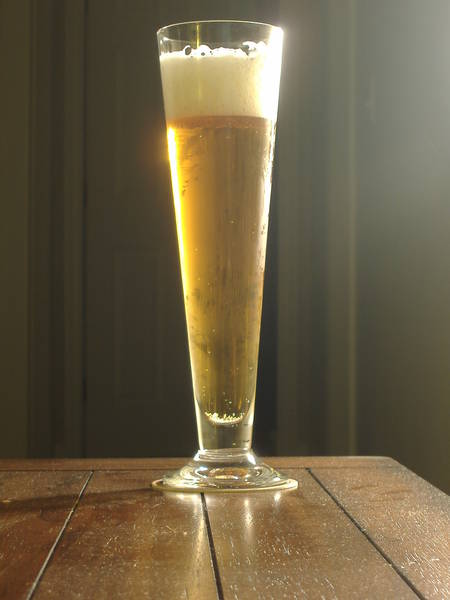

Cream Ale



KingBrianI
Well-Known Member
Thats a good start. I can see you were working the rule of thirds in the last photo, nice composition! Does your camera have a portrait setting? Or something that says aperture priority? Try going to portrait or if you can go to aperture priority mode, set the aperture at as low a number as it will allow. Then zoom the camera in as far as the optical zoom will go (back up as needed) and try the shot again.
I'm just getting into homebrewing, but my main hobby is photography.
One more vote for a tripod, and no flash. Available light will sometimes make for off colors indoors, since digital is not very good with white balance and incandescent lighting. Even my fancy SLRs will miss the WB on incandescent bulbs. If you have a manual white balance setting, try it.
Another tip for keeping blur/camera shake out of the photo is to use the self-timer while on the tripod. Unless you have a big beefy tripod, you can still shake it when you press the shutter.
im in the same boat, photographer turned home brewer! what gear do you use?
Although this wasn't my question, thanks for all the info everyone. I just got a Nikon D40x and this will be a nice fun thing to photograph with it.
the 40x is a nice camera to learn with, i started out a few years back with a D50. i now shoot with a D300.
LateApex
Member
im in the same boat, photographer turned home brewer! what gear do you use?
Funny, I also started with a D50 a few years ago, and have been shooting with a D300 for almost a year now. It's a great camera!
One thing you can do to learn about how to get photos a certain way is to look at the "exif file" embedded in digital photos. This will usually give all the exposure settings a person used in the photo. (as long as the photographer didn't strip it away) I learned a ton while I was starting out by just seeing this info and trying to duplicate.
A convenient way to do this is with an exif viewer plugin for your browser. I use Opanda. It's free and simple to use: Exif viewer : Opanda IExif - Professional EXIF / GPS / IPTC Viewer & Editor in Windows, IE & Firefox
For instance, I can tell Coastarine used a Fujifilm FinePix A345 in Portrait mode, No flash, 1/5" shutter speed, f/4.5, ISO 100 in his third photo. It also says his maximum aperture is f/2.8, so he could probably get a little more background blur. (I wouldn't expect much more though, compact cameras don't do shallow depth of field well.) He also needs to set the correct year in the camera. It says the photo was taken in 2005.
McGarnigle
Well-Known Member
Practice on apple juice, which doesn't go flat. And +1 on the suggestion to use the timer even with a tripod. I've played around with pressing my 10 sec. timer before I finished the pour to see if I can get an "action" shot of the beer before it's calmed down.
BrewOnBoard
Well-Known Member
- Joined
- Dec 8, 2008
- Messages
- 204
- Reaction score
- 7
I know we're bound to have some photography buffs around here. I like taking pictures of my beer, but I'd like it more if they looked better. I've tried a few things like different light but I really don't know what I'm doing. I'm not working with a fancy camera here, just a pocket fujifilm 4.1 megpixel. Could anyone give a simple explanation or tutorial for taking a good picture of a pint that showcases the clarity, color, foam, etc?
The trick to good photography is to get your subject properly motivated and loosened up. I find that encouraging your subject by telling them how great they look, how you've done this before and even how mature they are for their age works well. Throwing in a couple of wine coolers helps a lot too!
Then you have to have your photography subject...... ok, I can't do this with a straight face anymore.
BoB
BrewOnBoard
Well-Known Member
- Joined
- Dec 8, 2008
- Messages
- 204
- Reaction score
- 7
Practice on apple juice, which doesn't go flat. And +1 on the suggestion to use the timer even with a tripod. I've played around with pressing my 10 sec. timer before I finished the pour to see if I can get an "action" shot of the beer before it's calmed down.
HAHA! You said "Action shot"!
OK, I promise I'll leave this thread alone.
BrewOnBoard
PS I'm avoiding studying. Can you tell?
magnj
Well-Known Member
Like a few others said, light is your friend. I bought 2 CFL's and 2 work lamps, a white tri-fold poster board and shoot with my Pentax *IST DL and get stuff like this...still perfecting it but I'm happy with it for the cost.
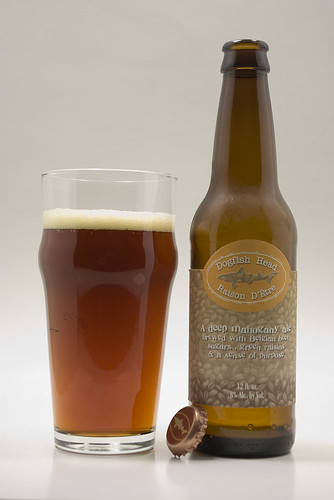
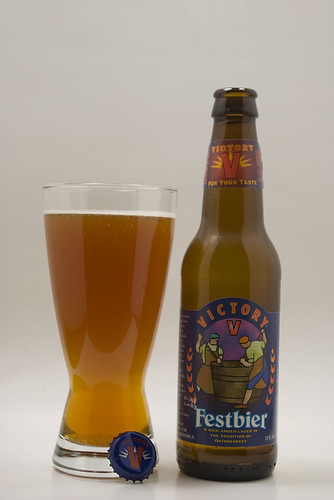


Pabst Blue Robot
Well-Known Member
Beer porn in 5......4.....3...2..1.










Pabst Blue Robot
Well-Known Member
A few DIY light box shots.








celestialparsnip
Well-Known Member
The plate of glass under the subject is a nice trick. I used it with my sheety cardboard lightbox for this picture:
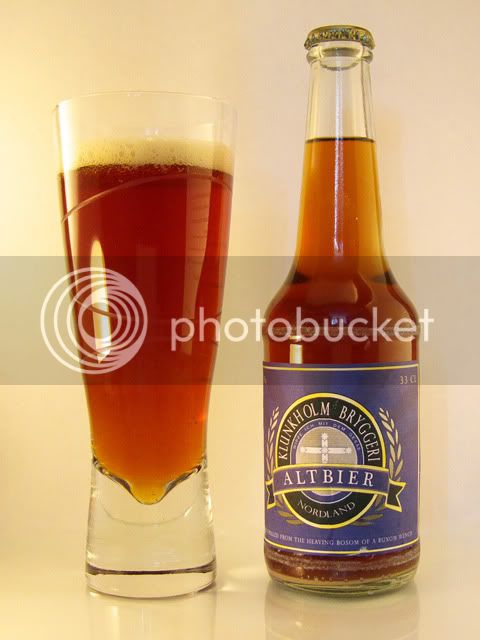
The white balance is off, but I quite liked the warm tones of the picture anyway. I have the RAW file, and played about with the WB, but came back to this setting. There were some unwanted reflections (and shadows) from the window behind me, but it came out well enough.

The white balance is off, but I quite liked the warm tones of the picture anyway. I have the RAW file, and played about with the WB, but came back to this setting. There were some unwanted reflections (and shadows) from the window behind me, but it came out well enough.
user 22118
Well-Known Member
- Joined
- Jul 4, 2008
- Messages
- 2,023
- Reaction score
- 13
One more thing to always think about in my opinion is that often time you forget what the subject of the picture is. Look at all of your vacation shots with waterfalls and mountains behind the people and do you notice that the background is in perfect balance, but the people are just little ants in the forground. Take pictures closer than you think in order to make them stand out more.
For example, my iPhone can't take a good close up shot, so all of my beer pictures with that camera come out looking like this.
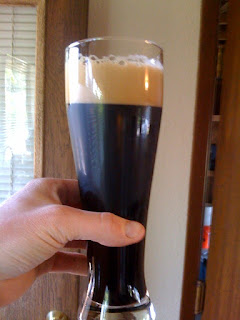
It makes for a good shot that I can then throw online quickly, but not good if I am going to frame it.
When I want to frame it I get as close as possible while still being able to identify the subject in order to create a picture that makes you want to dive in.
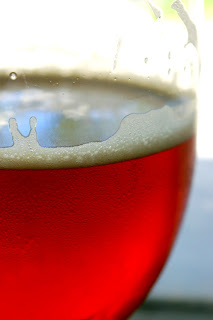
If you keep this in mind you will be able to have enjoyable vacation shots and also have some fun with your camera. AND never center your subject. Always just a touch off center.
For example, my iPhone can't take a good close up shot, so all of my beer pictures with that camera come out looking like this.

It makes for a good shot that I can then throw online quickly, but not good if I am going to frame it.
When I want to frame it I get as close as possible while still being able to identify the subject in order to create a picture that makes you want to dive in.

If you keep this in mind you will be able to have enjoyable vacation shots and also have some fun with your camera. AND never center your subject. Always just a touch off center.
user 22118
Well-Known Member
- Joined
- Jul 4, 2008
- Messages
- 2,023
- Reaction score
- 13
Hey PBR, if you toss a little light onto the front of your glasses in the lightbox it will help tremendously to focus them away from the backdrop a little bit more. Otherwise I like the little DIY lightbox 

Ragutis
Well-Known Member
I was able to work a beer into a food illustration I shot the other day. The background was so dark the beer was disappearing so I had a waitress stir the beer with a straw to get some bubbles going.
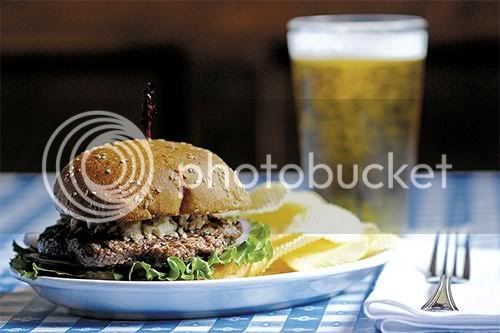

KingBrianI
Well-Known Member
Nice work!
Similar threads
- Replies
- 15
- Views
- 1K
- Replies
- 5
- Views
- 632
Latest posts
-
-
Lots of grain mush in the wort and scorching
- Latest: iandanielursino
-
-
-
-
-







